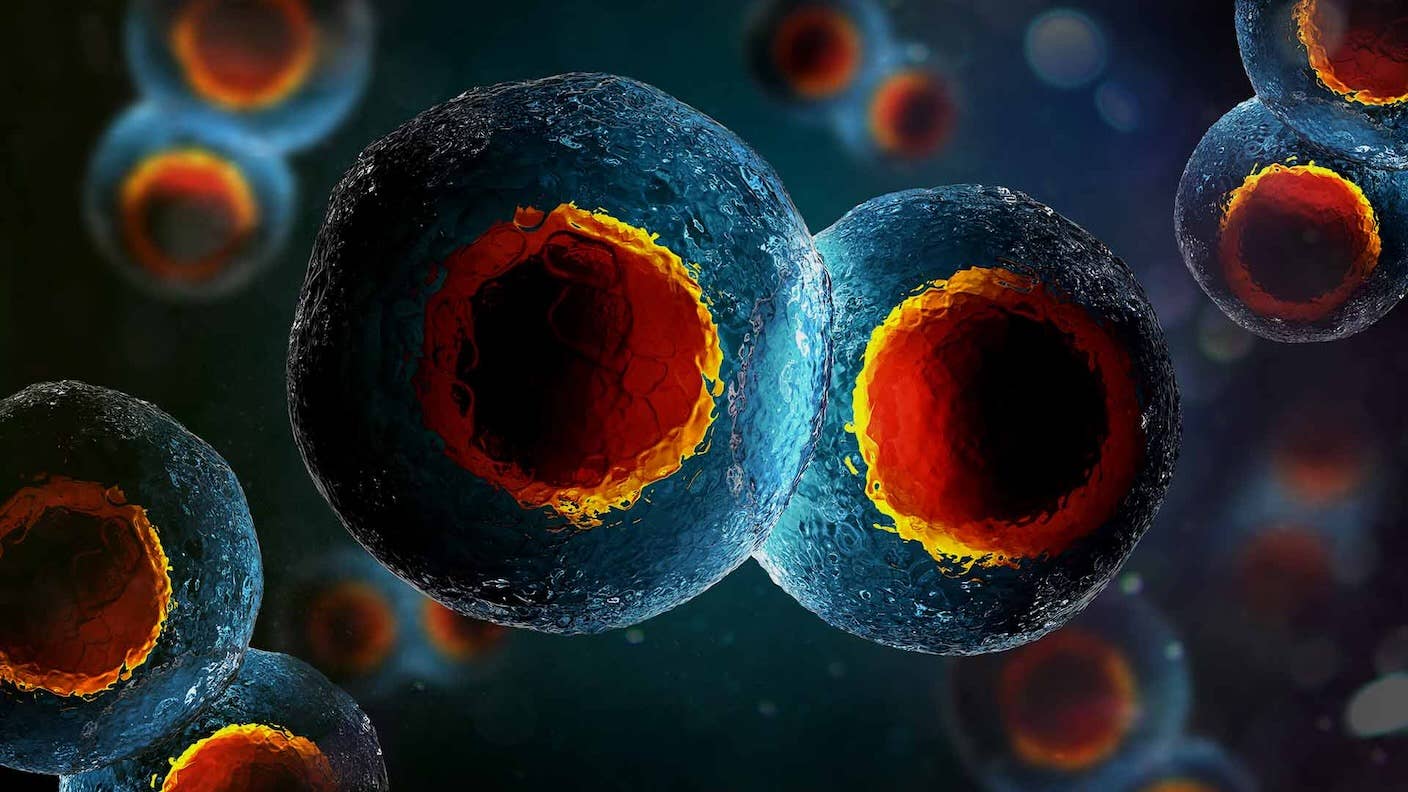Scientists Are Using AI to Dream Up Artificial Enzymes

Share
One of my favorite childhood summertime memories is being surrounded by fireflies. As the sun set, their shimmering glow would spark up the backyard like delicate fairy lights. The fact that living beings could produce light felt like magic.
But it’s not magic. It’s enzymes.
Enzymes are the catalysts of life. They drive every step of our metabolism, power photosynthesis in plants, propel viruses to replicate—and in certain organisms, trigger bioluminescence so they shine like diamonds.
Unlike manmade catalysts, which help speed up chemical reactions but often require high heat, pressure, or both, enzymes are incredibly gentle. Similar in concept to yeast for baking, enzymes work at life-sustaining temperatures. All you need to do is give them a substrate and working conditions—for example, flour and water—and they’ll perform their magic.
It’s partially why enzymes are incredibly valuable. From brewing beer to manufacturing medications and breaking down pollutants, enzymes are nature’s expert chemists.
What if we can outperform nature?
This week, a new study in Nature tapped into AI to engineer enzymes from scratch. Using deep learning, Dr. David Baker’s team at the University of Washington designed a new enzyme that mimics the firefly’s ability to spark light, but inside human cells in Petri dishes. Overall, the AI “hallucinated” over 7,500 promising enzymes, which were further experimentally tested and optimized. The resulting light was bright enough to see with bare eyes.
Compared to its natural counterpart, the new enzyme was highly effective, requiring just a little bit of substrate to light up the dark. It was also highly specific, meaning that the enzyme only preferred one substrate. In other words, the strategy could design multiple enzymes, each never seen in nature, to simultaneously perform multiple jobs. For example, they could trigger multiple-colored bioluminescence like a disco ball for imaging different biochemical pathways inside cells. One day, the engineered enzymes could also “double-tap” medicine and, say, diagnose a condition and test a treatment at the same time.
“Living organisms are remarkable chemists. Rather than relying on toxic compounds or extreme heat, they use enzymes to break down or build up whatever they need under gentle conditions. New enzymes could put renewable chemicals and biofuels within reach,” said Baker.
Proteins by Design
At their core, enzymes are just proteins. That’s great news for AI.
Back in 2021, the Baker lab developed an algorithm that accurately predicts protein structures based on the amino acid sequence alone. The team next nailed down functional sites in proteins using trRosetta, an AI architect that imagines and then hones in on hot spots that a drug, protein, or antibody can grab onto—paving the way for medications humans can’t dream up.
So why not use the same strategy to design enzymes and fundamentally rewire nature’s biochemistry?
Enzyme 2.0
The team focused on luciferase as their first target—the enzyme that makes fireflies sparkle.
It’s not for childhood nostalgia: luciferase is widely used in biological research. With the right partner substrate, luminescent photons shine through the dark without the need for an external light source, allowing scientists to directly peek inside a cell’s inner workings. So far, scientists have only identified a few types of these valuable enzymes, with many unsuitable for mammalian cells. This makes the enzyme a perfect candidate for AI-driven design, the team said.
They set out with several goals. One, the new light-emitting enzyme should be small and stable in higher temperatures. Two, it needed to play well with cells: when coded as DNA letters and delivered into living human cells, it could hijack the cell’s internal protein-making factory and fold into accurate 3D structures without causing stress or damage to its host. Three, the candidate enzyme had to be selective for its substrate to emit light.
Selecting the substrates was easy: the team focused on two chemicals already useful for imaging. Both are in a family dubbed “luciferin,” but they differ in their exact chemical structure.
Be Part of the Future
Sign up for SingularityHub's weekly briefing to receive top stories about groundbreaking technologies and visionary thinkers.


Then they ran into problems. A critical factor to train an AI is tons of data. Most previous studies used open-sourced databases such as the Protein Data Bank to screen for possible protein scaffolds—the backbone that makes up a protein. Yet DTZ (diphenylterazine), their first luciferin of choice, had few entries. Even worse, changes to their sequence caused unpredictable results in their ability to emit light.
As a workaround, the team generated their own database of protein scaffolds. Their backbone of choice started from a surrogate protein, dubbed NTF2 (nuclear transport factor 2). It’s a wild bet: NTF2 has nothing to do with bioluminescence, but contained multiple pockets in size and structure feasible for DTZ to bind to—and potentially emit light.
The adoption strategy worked. With a method called “family-wide hallucination,” the team used deep learning to hallucinate over two thousand potential enzyme structures based on NTF2-like protein backbones. The algorithm then optimized the core regions of the binding pocket, while allowing creativity in more flexible regions of the protein.
In the end, the AI hallucinated over 1,600 protein scaffolds, each better suited for DTZ than the original NTF2 protein. Next, with the help of RosettaDesign—a suite of AI and other computational tools for protein design—the team further screened for active sites for DTZ while keeping the scaffold stable. Overall, over 7,600 designs were selected for screening. In a matchmaker’s dream (and a grad student’s nightmare), the designs were encoded into DNA sequences and inserted into bacteria to test their enzymatic strengths.
One winner reigned. Dubbed LuxSit (from the Latin for “let light exist”), it’s compact—smaller than any known luciferases—and incredibly stable, retaining full structure at 95 degrees Celsius (203 Fahrenheit). And it works: when given its substrate, DTZ, the testing apparatus glowed.
The Race for Designer Enzymes
With LuxSit in hand, the team next set out to optimize its ability. Focusing on its binding pocket, they generated a library of mutants in which each amino acid was mutated one at a time to see if these “letter” changes affected its performance.
Spoiler: they did. Screening for the most active enzyme, the team found LuxSit-i, which pumps out 100 more photons every second onto the same area compared to LuxSit. The new enzyme also triumphed over natural luciferases, lighting up cells 40 percent more than naturally-occurring luciferase from the sea pansy—a species that glow on the luminescent beaches on the warm shores of Florida.
Compared to its natural counterparts, LuxSit-i also had an “exquisite” ability to target its substrate molecule, DTZ, with a 50-fold selectivity over another substrate. This means the enzyme played well with other luciferases, allowing researchers to monitor multiple events inside cells simultaneously. In a proof-of-concept the team proved just that, tracking two critical cellular pathways involved in metabolism, cancer, and immune system function using LuxSit-i and another luciferase enzyme. Each enzyme grabbed onto their substrate, emitting a different color of light.
Overall, the study further illustrates the power of AI for altering existing biochemical processes—and potentially designing synthetic life. It’s not the first to hunt for enzymes with additional, or more efficient, abilities. Back in 2018, a team at Princeton engineered a new enzyme by experimentally mutating each “hotspot” amino acid at a time—a tedious, if rewarding attempt. Flash forward and deep learning is, cough, catalyzing the entire design process.
“This breakthrough means that custom enzymes for almost any chemical reaction could, in principle, be designed,” said study author Dr. Andy Hsien-Wei Yeh.
Image Credit: Joshua Woroniecki from Pixabay
Dr. Shelly Xuelai Fan is a neuroscientist-turned-science-writer. She's fascinated with research about the brain, AI, longevity, biotech, and especially their intersection. As a digital nomad, she enjoys exploring new cultures, local foods, and the great outdoors.
Related Articles

CRISPR Baby 2.0? Controversial Simulation Touts Benefits of Gene Editing Embryos

Time Expansion Experiences: Why Time Slows Down in Altered States of Consciousness

This Molecule Mimics the Antiaging Effects of Dieting—Without the Hunger
What we’re reading